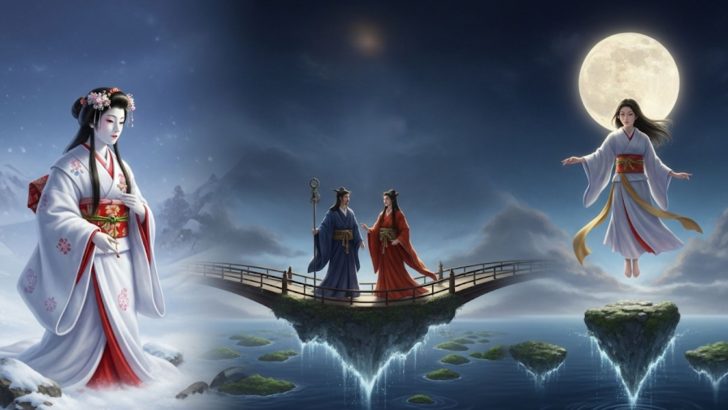Japanese folklore is a rich, magical world filled with gods, monsters, tricksters, and lovers who shape the culture’s view of nature, honor, life, and the unseen.
Whether it’s a tale about the sun refusing to shine or a ghostly woman with long black hair seeking vengeance, these myths are anything but boring.
They’re emotional, deep, and weirdly relatable. The stories have been passed down for centuries and still enchant people of all ages.
So if you’re curious about the legendary creatures, gods, and stories that make up Japan’s spiritual backbone, let’s dive into some of the most iconic myths.
1. Amaterasu and the Cave of Darkness
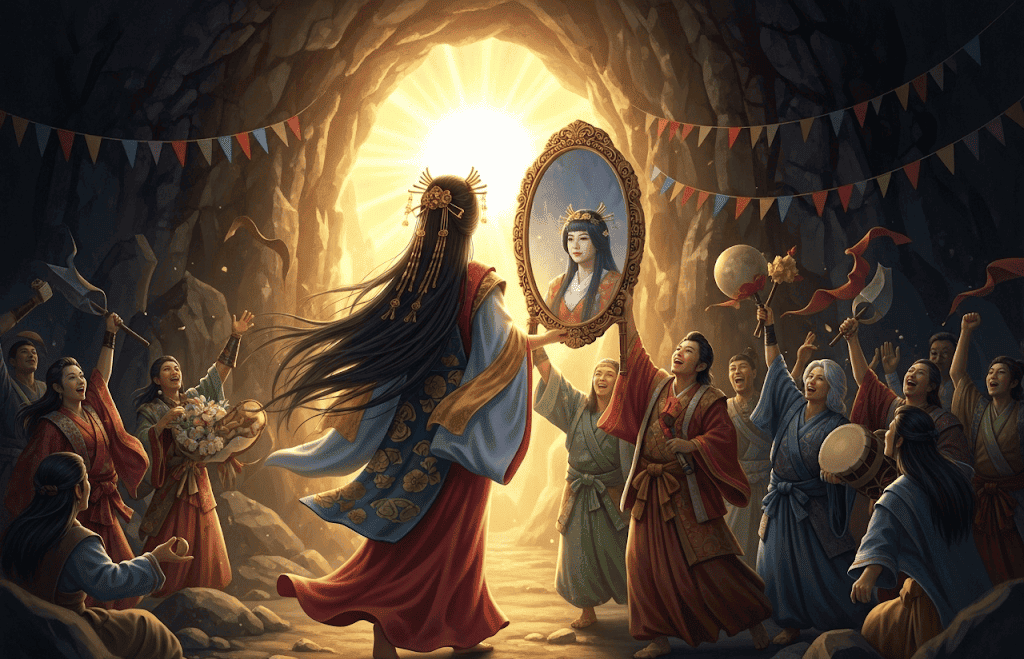
Amaterasu, the sun goddess, got so fed up with her brother Susanoo’s chaos that she hid herself in a cave.
As the goddess of light, her absence plunged the world into complete darkness. The gods panicked because no sun meant no crops, no warmth, and definitely no good vibes.
They tried everything to lure her out, but nothing worked. Finally, they threw a party outside the cave and made the goddess Uzume dance hilariously.
When Amaterasu peeked out, curious about the noise, they held up a mirror and showed her her own radiant reflection. Delighted and flattered, she stepped out — and light returned to the world.
This myth is about more than sunshine. It’s about how joy, beauty, and collective spirit can pull someone out of even the deepest emotional cave.
And yes, even a divine tantrum can be cured with laughter and self-love. Basically: goddess glow-ups are real.
2. The Tale of Urashima Tarō

Urashima Tarō was a kind fisherman who saved a turtle from cruel kids. The turtle turned out to be a magical being and invited him to the Dragon Palace beneath the sea.
There, Tarō met a beautiful princess, Otohime, and lived in dreamy, timeless bliss. After what felt like a few days, he missed his family and asked to return home.
The princess gave him a mysterious box called a tamatebako and told him never to open it. But when he returned to land, everything had changed, and hundreds of years had passed.
Everyone he knew was gone. In shock, he opened the box — and instantly aged into an old man. This haunting myth is a poetic reminder that time is precious.
Actions have consequences, and some things are better left untouched. It’s both a fairy tale and a caution. And it’ll make you want to hug your grandma.
3. Momotarō – The Peach Boy
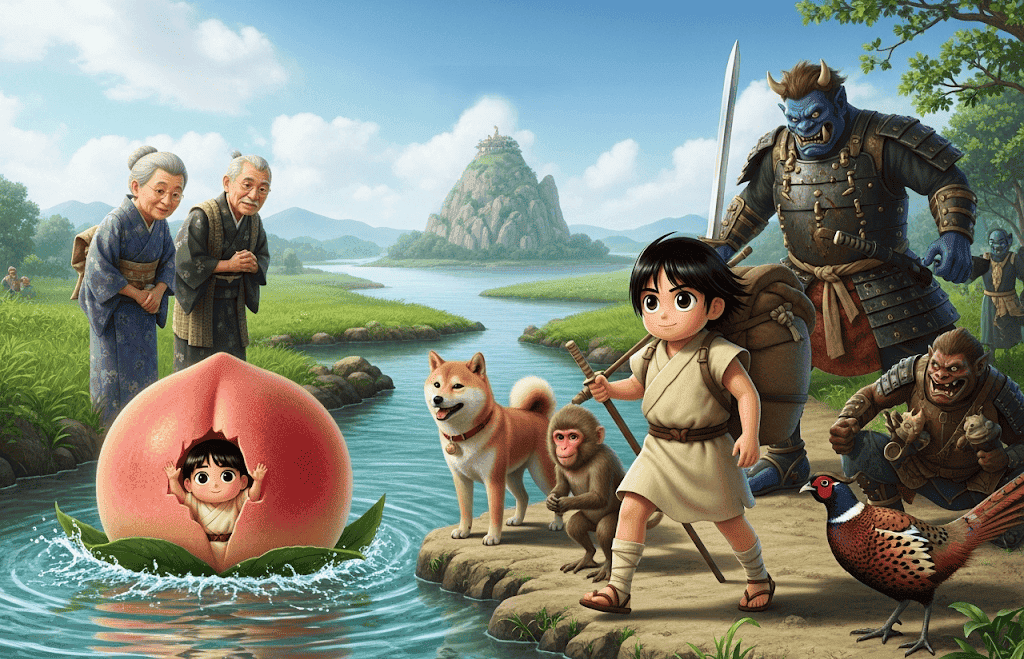
Once upon a time, an old woman found a giant peach floating down the river. When she and her husband opened it, out popped a baby boy — Momotarō, a gift from the heavens.
As he grew up strong and brave, he decided to fight the ogres (oni) terrorizing the land. Armed with dumplings and big courage, he set out on a journey and befriended a talking dog, monkey, and pheasant.
Together, they traveled to Oni Island and defeated the monsters with clever teamwork. Momotarō returned home a hero, bringing peace and treasure with him.
This cheerful tale is one of Japan’s most beloved children’s stories, and it’s packed with classic hero energy: kindness, loyalty, courage, and snacks.
It reminds us that true strength doesn’t come from muscle but from heart — and good friends. Plus, how can you not love a kid who literally came from a peach?
4. The Creation of Japan – Izanagi and Izanami

Long before Japan existed, the gods Izanagi and Izanami were tasked with creating the land. Standing on the Heavenly Floating Bridge, they dipped a jeweled spear into the ocean.
As they lifted it, drops fell and formed the first island — Onogoro. They descended and got married, giving birth to many more islands and deities.
But tragedy struck when Izanami died giving birth to the fire god. Heartbroken, Izanagi went to the land of the dead to retrieve her, but she had already begun to decay.
When he saw her rotting form, he fled in horror. Angry and ashamed, Izanami vowed to take a thousand lives daily. Izanagi countered by creating fifteen hundred new ones each day.
Their story marks the beginning of life, death, and rebirth. It’s not just a creation myth; it’s the first messy breakup in divine history.
5. Tengu – The Winged Tricksters

Tengu are mischievous, powerful beings with red faces and long noses, often portrayed with wings. Once seen as dangerous demons, they evolved into protectors of sacred forests and skilled warriors.
These mountain spirits love to test arrogant samurai or scare away greedy woodcutters. But they’re not all bad — some tengu teach swordsmanship or protect travelers who show respect to nature.
Tengu embody the wild, untamed energy of the mountains. If you’re pure of heart, you might earn their blessing. But if you’re full of pride?
Expect to be humbled quickly, like being tossed into a tree or having your belongings rearranged. They’re part prankster, part guardian, and 100% unpredictable.
Tengu stories remind us to stay humble, respect nature, and maybe think twice before mocking strange noises in the woods.
6. Yuki-onna – The Snow Woman

Yuki-onna, the Snow Woman, appears on freezing nights — tall, beautiful, with pale skin and long black hair. She floats through snowstorms in a white kimono, her breath icy cold.
Some say she helps lost travelers. Others say she drains the life from them with a chilling kiss. One famous version tells of a man she spares because he’s young and kind.
Years later, he marries a mysterious woman who warns him never to ask about her past. Of course, curiosity gets the better of him.
When he finally questions her, she reveals her true identity (Yuki-onna) and disappears forever. This haunting myth is poetic and eerie, touching on love, mystery, and the cold consequences of broken trust.
It’s a story where beauty hides danger, and silence holds power. Basically: if your snowy girlfriend floats and doesn’t leave footprints… maybe don’t ask too many questions.
7. Tanabata – The Star-Crossed Lovers

Tanabata tells the romantic story of Orihime, the weaving princess, and Hikoboshi, the cowherd. They were celestial lovers, but once they fell in love, they stopped doing their divine duties.
The gods, annoyed, separated them across the Milky Way. However, they were allowed to meet once a year, on the seventh day of the seventh lunar month — if the skies were clear.
Today, Tanabata is a beloved festival in Japan where people write wishes on colorful strips of paper and hang them on bamboo trees, hoping for clear skies.
The myth is tender, dreamy, and bittersweet — a reminder that love is powerful, but balance is key. You can’t ignore your responsibilities forever, even for love.
But once a year? You deserve a magical reunion. It’s a perfect blend of romance, regret, and stardust. And honestly, who doesn’t love a cosmic love story with a happy(ish) ending?
8. The Grateful Crane
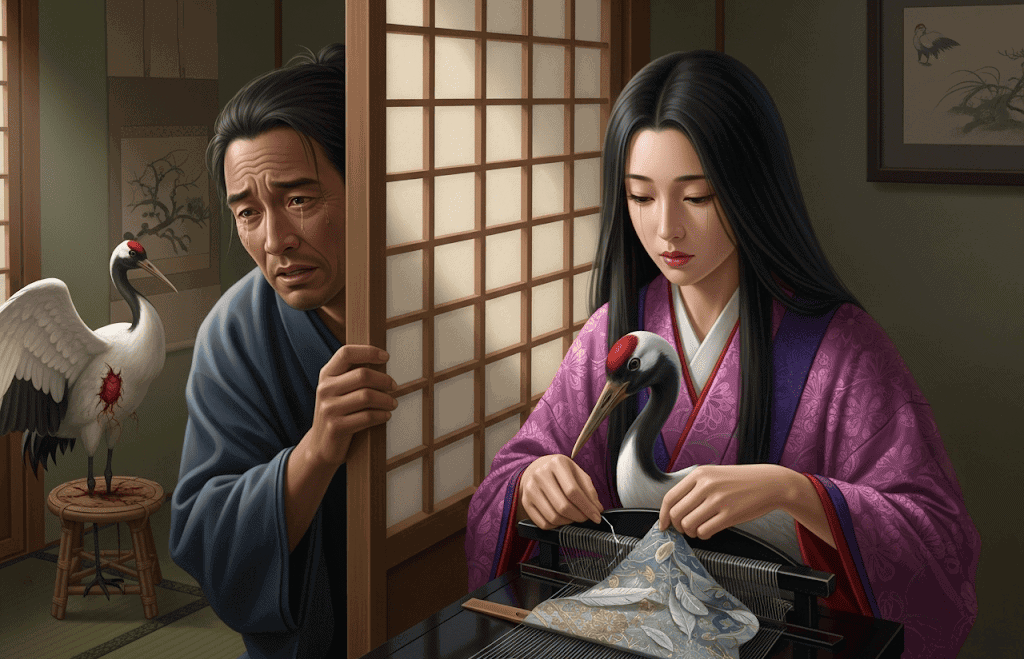
A poor man saves a wounded crane, and days later, a mysterious woman shows up at his door. They fall in love and marry.
She weaves the most exquisite cloth from behind closed doors, but asks him never to look inside. He agrees, but curiosity eventually wins.
Peeking in, he discovers she is actually the crane he saved, plucking her own feathers to weave the magical fabric. Heartbroken that he broke his promise, she leaves and flies away forever.
This myth is deeply emotional, a gentle story about kindness, gratitude, and the pain of broken trust. It teaches us to appreciate what we have and to respect boundaries, even when we’re tempted.
It also leaves you with the warm reminder that love often comes in unexpected forms, and true gifts don’t always need to be unwrapped.
9. Kaguya-hime – The Moon Princess
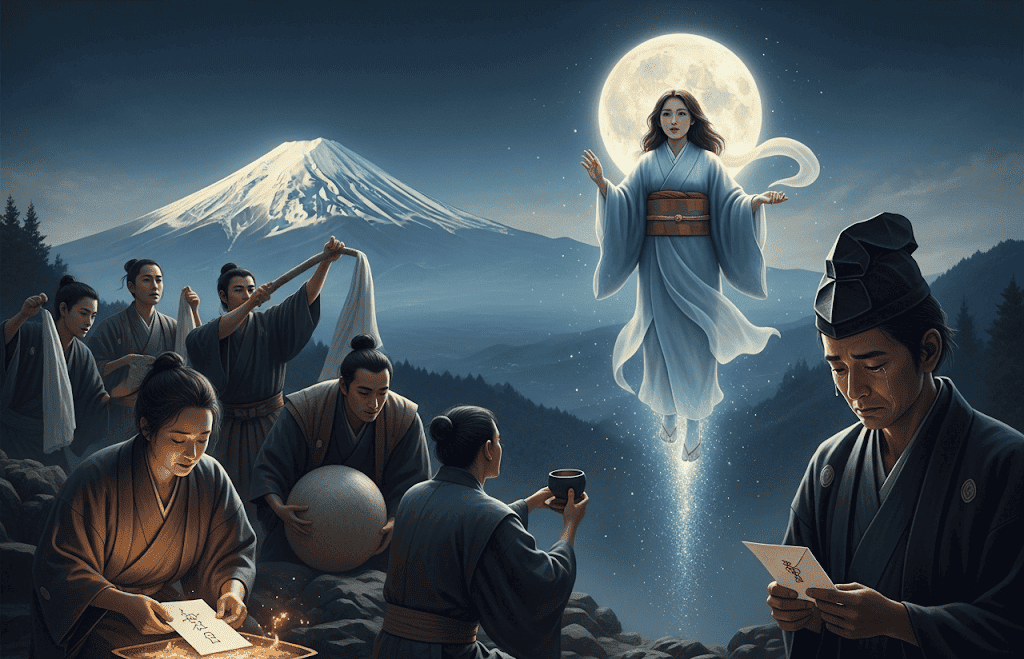
A bamboo cutter finds a glowing stalk one day, and inside it, a tiny girl. He and his wife raise her, and she grows into a stunning woman named Kaguya-hime.
Suitors from all over beg for her hand, but she gives them impossible tasks like bringing back fireproof cloth or Buddha’s stone bowl.
Eventually, she reveals she’s not of this world but from the Moon, and her people are coming to take her back.
On the night of her return, she leaves behind a letter and an elixir of immortality, which her heartbroken foster father later burns on Mount Fuji.
This myth is dreamy and poetic, touching on love, loss, and destiny. Kaguya-hime is gentle, wise, and otherworldly, a symbol of fleeting beauty and impossible love.
10. The Legend of the Kappa

Kappa are strange river creatures with turtle-like bodies, webbed hands, and a water-filled dish on their heads. If the water spills, they lose their power.
Kappa love pulling pranks, challenging people to sumo matches, or dragging folks into rivers. But there’s a trick: if you bow to a kappa, it will politely bow back, spilling the water and weakening itself.
Despite their creepy reputation, kappa also help farmers and bring fresh water if treated with respect. They adore cucumbers, which is why cucumber sushi is called kappa maki!
These quirky beings represent both the danger and life-giving nature of water. They’re scary, funny, and weirdly polite.
The lesson? Always respect nature, offer a cucumber now and then, and keep your manners sharp even when facing a water goblin with a bowl on its head.

Ho sempre sentito una forte connessione con il Divino fin dalla mia nascita. Come autrice e mentore, la mia missione è aiutare gli altri a trovare l'amore, la felicità e la forza interiore nei momenti più bui.

